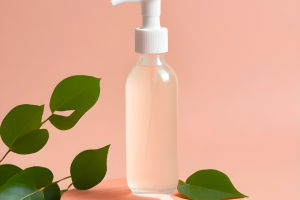When we think about hair care, images of luxurious shampoos, conditioners, and styling tools often come to mind.
Yet, beneath the surface of glossy advertisements lies a complex interplay of biology, chemistry, and physics.
Understanding the science behind hair care can transform the way we approach our daily routines, leading to healthier locks and more informed choices.
At its core, hair is a remarkable biological structure. Each strand is composed of three primary layers: the cuticle, cortex, and medulla. The cuticle is the outermost layer, consisting of overlapping cells that protect the inner structures.
The cortex contains fibrous proteins and pigments that give hair its strength and color, while the medulla, present in thicker hair, is the innermost layer that may influence the hair's thickness.
Hair growth occurs in cycles: the anagen (growth phase), catagen (transitional phase), and telogen (resting phase). Factors such as genetics, hormones, and nutrition significantly influence these cycles.
For instance, deficiencies in essential nutrients like iron and biotin can disrupt hair growth, leading to thinning or shedding. Hormonal imbalances, particularly involving thyroid hormones or androgens, can also affect hair density and texture.
The myriad of hair care products available today is a testament to the intricate chemistry involved in hair maintenance. Shampoos, for example, contain surfactants—molecules that help remove dirt and oil from the hair and scalp.
Common surfactants include sodium lauryl sulfate and sodium laureth sulfate, which effectively cleanse but can also strip natural oils, potentially leading to dryness.
Conditioners and hair treatments often incorporate silicones, oils, and proteins to replenish moisture and repair damage. Silicones like dimethicone form a protective layer around the hair shaft, reducing frizz and adding shine.
Proteins such as keratin and collagen can temporarily fill in gaps in the hair cuticle, strengthening weakened areas.
Understanding these ingredients allows consumers to select products that cater to their specific hair needs without causing unintended harm.
Styling hair involves more than just aesthetic choices; it's a practical application of physics. Heat styling tools like blow dryers, flat irons, and curling wands manipulate hair shape by breaking and reforming hydrogen bonds within the hair's cortex.
While this allows for versatile styling, excessive heat can cause the hair's keratin proteins to denature, leading to brittleness and breakage.
Mechanical stress from brushing, combing, and tight hairstyles can also damage hair. Tension can weaken the hair shaft or pull hair from the follicles, a condition known as traction alopecia.
Using tools designed to minimize friction and avoiding overly tight styles can help preserve hair integrity.
The hair care industry continually evolves, integrating advanced scientific research into product development. Recent innovations include personalized hair care solutions that consider an individual's genetic makeup or scalp microbiome.
DNA-based products aim to address specific genetic predispositions affecting hair health, while microbiome-focused products strive to balance the scalp's ecosystem, reducing issues like dandruff or irritation.
Sustainability has also become a significant focus. Brands are developing eco-friendly formulations, utilizing biodegradable ingredients, and reducing plastic packaging to minimize environmental impact. These efforts reflect a growing awareness of the interconnectedness between personal care and planetary health.
Hair care transcends mere cosmetic concern; it's a scientific endeavor that intertwines biology, chemistry, and physics. By delving into the science behind our hair and the products we use, we empower ourselves to make choices that enhance hair health and express our personal style responsibly.
The next time you reach for that bottle of shampoo or heat up your styling tool, remember the fascinating science at play—and consider how a deeper understanding can lead to healthier, more vibrant hair.


